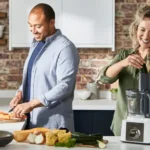Recipe blogging is competitive, but great content stands out. Writing engaging recipe posts isn’t just about listing ingredients and instructions. It’s about capturing attention, building trust, and keeping readers coming back. Here’s how to do it right.
Know Your Audience
Before typing a single word, define who you’re writing for. Are your readers busy parents, health enthusiasts, beginners, or foodies? Knowing your audience shapes everything:
- Tone: Casual and conversational for beginners; precise and technical for culinary pros.
- Ingredient Choices: Everyday staples vs. exotic imports.
- Serving Sizes: Family portions vs. single servings.
Start with a Strong Hook
Grab attention early. Start your post with a quick story, a surprising fact, or a problem-solution setup.
Examples:
- “This 20-minute pasta saved my weeknight dinner dilemma.”
- “Tired of dry chicken breasts? This one trick changes everything.”
Write a Compelling Recipe Introduction
This is where you connect with your reader. Cover:
- Why you love the recipe.
- When you make it.
- Any personal or cultural story behind it.
Avoid rambling. Keep it personal but tight. Aim for 2-3 concise paragraphs.
Use Clear, Structured Formatting

Good formatting makes posts scannable and readable. Use:
- Headings and subheadings.
- Bullet points for ingredients.
- Numbered steps for instructions.
- Bold for emphasis.
Example Structure:
- Introduction
- Ingredients Table
- Step-by-Step Instructions
- Tips and Variations
- Nutrition Info (if relevant)
- FAQs
- Final Thoughts
Nail the Ingredients Section
Clarity is key. Include:
- Specific measurements (use both metric and imperial if possible).
- Optional ingredients.
- Substitutions.
Tip: Use a table to make this section more reader-friendly.
| Ingredient | Quantity | Notes |
|---|---|---|
| Chicken breast | 2 | Boneless, skinless |
| Olive oil | 2 tbsp | Extra virgin preferred |
| Garlic | 3 cloves | Minced |
Write Foolproof Instructions
Break it down. Assume the reader is trying the recipe for the first time.
- Keep steps short and direct.
- Add visual cues (“until golden brown” or “simmer until reduced by half”).
- Use one step per action.
Add Helpful Tips and Variations
Give readers ways to customize:
- Ingredient swaps (e.g., almond milk instead of dairy).
- Make-ahead options.
- Storage and reheating tips.
- Flavor boosters.
Bonus: Link to similar recipes on your blog.
Include High-Quality Photos
Photos sell the recipe. Every post should have:
- A featured image.
- Step-by-step photos (if possible).
- Final dish close-ups.
Photography Tips:
- Use natural light.
- Keep the background clean.
- Style food neatly without being artificial.
Optimize for SEO
Help your post get found:
- Keyword research: Use tools like Ubersuggest or SEMrush.
- Use the keyword in title, URL, first 100 words, subheadings, and image alt text.
- Write a meta description (150-160 characters) that summarizes the recipe.
- Internal linking: Link to related posts.
- Use schema markup for recipe posts (JSON-LD or plugin).
Add FAQs

Answer common questions to increase time on page and SEO value.
Examples:
- Can I freeze this dish?
- What can I use instead of eggs?
- How long does it last in the fridge?
Encourage Engagement
At the end of your post:
- Invite readers to leave a comment or rating.
- Suggest they share their version on social media.
- Offer a newsletter signup for more recipes.
Update and Repurpose Content
Old posts can be goldmines. Refresh:
- Outdated info.
- Poor photos.
- Weak intros.
Then repurpose into:
- YouTube videos
- Pinterest pins
- Instagram Reels
Conclusion
Writing engaging recipe posts means balancing storytelling with structure, personality with precision. Focus on your reader, offer value at every step, and optimize for visibility. The best recipe blogs aren’t just cookbooks online; they’re communities built on trust, flavor, and usefulness.







